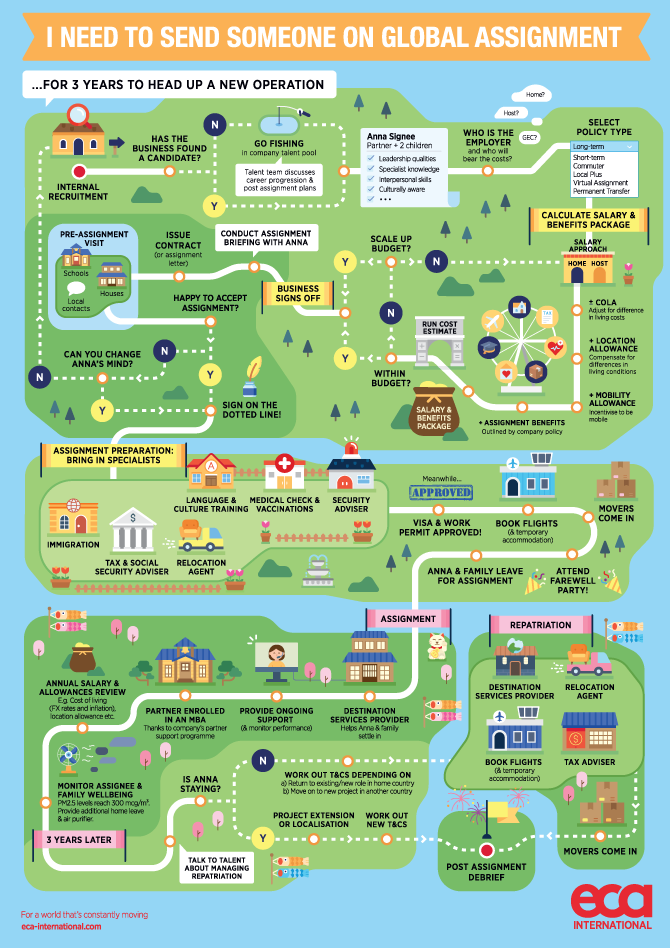It is often underestimated (and underappreciated) how many processes are set in motion the moment a company elects to send an employee abroad. Anyone not involved in the process could be forgiven for thinking it is as simple as sorting out a very long holiday – book flights and accommodation, pack some stuff, don’t forget your passport... how hard can it be?
Those of us working in global mobility (GM) know there is more to it. A lot more. So much more in fact, that organisations will set up dedicated teams, invest in software systems and tools and partner-up with various providers, consultants and experts to make sure that sending individuals across the world and back is a smooth, compliant and efficient process that contributes to the financial and productive wellbeing of the business.
This wonderful infographic illustrates a typical, long-term assignment lifecycle. It is a high-level glance into what needs to happen when a company wants to send an employee from country A to country B, based on best practice as well as what typically happens in reality. In this example, we track ‘Anna Signee’ and her family throughout their assignment and follow the process the organisation would normally have in place, from recruitment and selection of the individual through pre-assignment preparation and relocation all the way to repatriation and the all important post assignment debrief.
(Click to enlarge)
